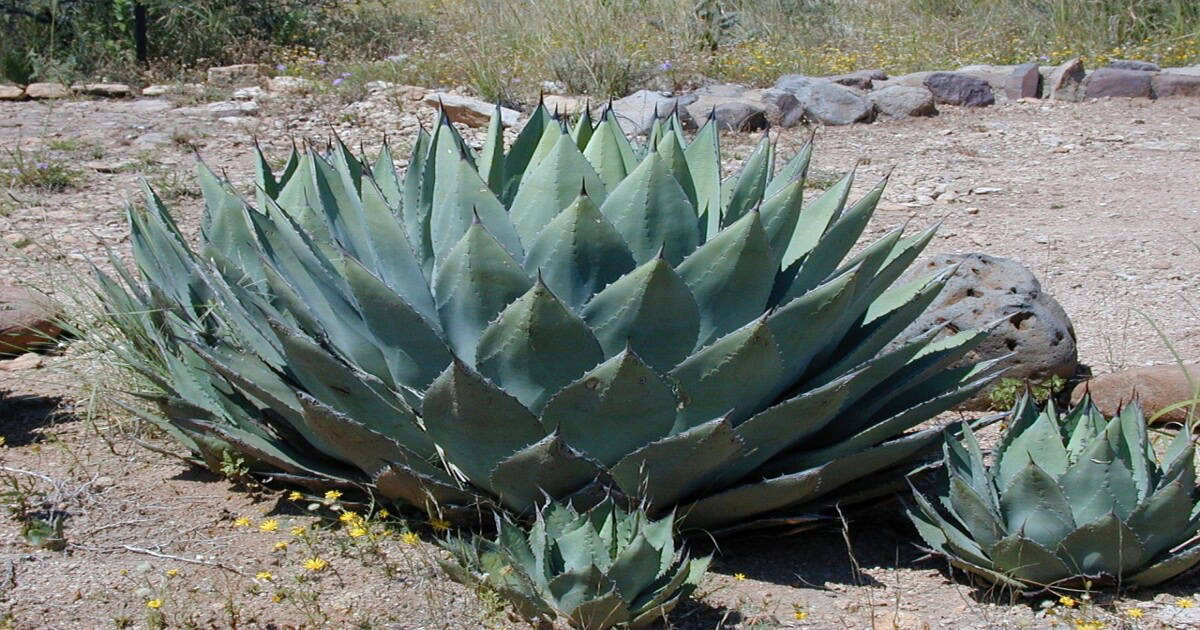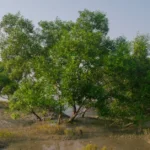Desert plants are uniquely adapted to survive in harsh, dry environments. These plants thrive in regions where water is scarce and temperatures are extreme. Their ability to store water, reduce water loss, and grow in nutrient-poor soils makes them resilient in arid conditions.
In recent years, desert plants have gained popularity for landscaping, especially in drought-prone areas. Their low maintenance and water conservation features make them ideal for sustainable gardens. Furthermore, these plants add aesthetic and ecological value to spaces, supporting biodiversity while requiring little care.
Some of the top desert plants are known for their ability to withstand dry climates. In this post, we will explore popular desert plants and their characteristics, focusing on how they adapt to survive and contribute to the environment.
What are Desert Plants?
Desert plants are species that thrive in arid regions with minimal rainfall. They have evolved unique features to survive harsh conditions where water is scarce. Moreover, these plants, known as xerophytes, adapt to conserve water and endure extreme temperatures.
Many develop extensive root systems to tap into deep water sources. Furthermore, their growth patterns are usually slow, reducing their energy and water needs. Desert plants are remarkable examples of nature’s resilience.
One key survival strategy of desert plants is water retention. For example, cacti store water in their thick stems, allowing them to survive long dry periods. In addition, many desert plants reduce or modify their leaves to minimize water loss through transpiration.
Some open their stomata at night, a process called CAM photosynthesis, to reduce evaporation. They may have protective features like spines or thick waxy coatings. These adaptations help them withstand the intense sun and conserve moisture.
Desert plants play a crucial role in arid ecosystems. They prevent soil erosion by anchoring the soil with their roots. Moreover, they provide food and shelter for desert animals, supporting biodiversity. Many species use the fruits of the prickly pear cactus as a food source.
Furthermore, desert plants contribute to nutrient cycling in the soil. Understanding their adaptations helps us appreciate their importance in sustaining life in harsh environments. Their resilience offers insights for sustainable agriculture and landscaping in dry regions.

Popular Desert Plants and Their Characteristics
There are various plants grown in desert environments that have adapted to extreme conditions. These plants are able to survive intense heat, limited water, and nutrient-poor soil.
Below are 10 popular desert plants and their unique characteristics that help them thrive in arid landscapes. Their adaptations make them some of the top desert plants for survival in harsh climates.
Saguaro Cactus
The Aaguaro Cactus is one of the most iconic desert plants, known for its towering height and thick, ribbed stem. It can store up to 200 gallons of water during the rainy season, allowing it to survive long dry spells. Its shallow roots spread out wide, capturing rainwater quickly. This plant is a staple of the Sonoran Desert and provides food and shelter for desert animals.
Aloe Vera
This desert plant is not only drought-tolerant but also valued for its medicinal uses. Its thick, fleshy leaves store water, making it resilient during dry periods. Besides, Aloe Vera gel is known for its soothing properties, used in treating burns and skin conditions. This plant is commonly found in desert regions but has gained global recognition for its healing qualities.
Joshua Tree
Joshua tree stands out due to its unique, twisted appearance and ecological significance. Found mainly in the Mojave Desert, it can live for hundreds of years. The tree provides essential habitats for many animals and birds. Its deep roots and ability to retain water make it a hardy species, well-suited for desert life.
Prickly Pear
Prickly Pear is a versatile desert plant known for its drought resistance and edibility. Its thick pads store water, helping it survive dry periods. Besides, its fruit is edible and widely used in jams and juices. This plant is one of the top desert plants due to its resilience and value to local communities.
Agave
Agave is a desert plant well-known for thriving in extreme conditions. Its thick leaves store water, while its deep roots help it access moisture from the ground. Agave is also used to produce products like tequila and syrup, making it both valuable and tough in arid landscapes.
Also Read: Ecology, Environment, and Conservation Strategies
Ocotillo
Ocotillo is notable for its seasonal growth patterns. During rainfall, this desert plant quickly sprouts leaves, which it sheds during droughts. It also blooms vibrant red flowers, adding color to desert environments. This seasonal adaptability helps the Ocotillo thrive in shifting desert conditions.
Barrel Cactus
Barrel Cactus is one of the most water-efficient plants in the desert. Its thick, ribbed body allows it to expand and store large amounts of water during rain. This feature makes it a key survivor in drought-prone areas, helping the cactus endure long dry spells.
Desert Marigold
This flowering plant thrives in extreme temperatures. Its bright yellow flowers bloom in the heat, and its small, hairy leaves help minimize water loss. This plant is well-adapted to desert life, offering both beauty and resilience to arid landscapes.
Creosote Bush
Creosote Bush has a unique chemical adaptation for survival. Its roots secrete a chemical that prevents other plants from growing nearby, reducing competition for water. This desert plant is also long-living and highly resistant to drought, making it one of the top desert plants.
Mesquite Tree
This desert plant is known for its deep taproot system, which can extend far into the soil to find water. This allows it to survive in the harshest desert conditions. Mesquite trees also provide shade and food for wildlife, making them an important part of desert ecosystems.
Desert Plants and Their Adoption in Landscaping
Desert plants have become increasingly popular in modern landscaping, especially in regions with arid and semi-arid climates. These plants are well-suited for areas with limited rainfall, making them an ideal choice for landscaping in places like the southwestern United States and parts of Australia and also in India.
Their natural ability to thrive in dry conditions, combined with their unique and striking appearance, has made them a favorite for both residential and commercial landscapes.
One of the main benefits of using desert plants is their ability to conserve water. Drought-tolerant plants require minimal watering, which is crucial for sustainable landscaping in water-scarce regions. Furthermore, these plants are low-maintenance, reducing the need for fertilizers and frequent care.
This property of desert plants makes them perfect for homeowners and landscapers looking to create eco-friendly, low-maintenance gardens. Therefore, desert plants not only add aesthetic appeal but also contribute to environmental conservation.
Desert plants have also gained popularity beyond their native regions. Their ability to adapt to various climates has led to their use in places where water conservation is essential.
For example, succulents like agave and aloe vera are commonly used in landscaping designs worldwide. This trend highlights the versatility of desert plants and their growing importance in sustainable landscaping practices across diverse climates.
Environmental and Ecological Importance of Desert Plants
Desert plants play a crucial role in maintaining ecological balance in arid ecosystems. They are adapted to survive in harsh environments and help regulate the natural ecosystem by supporting other organisms.
Besides providing food and shelter for various animals, desert plants also contribute to the stability of the soil. This allows them to serve as the foundation for much of the ecosystem in desert regions.
One of the significant contributions of desert plants is their ability to prevent soil erosion. Their extensive root systems help anchor the soil, reducing the impact of wind and rain that can wash away the top layer.
Furthermore, desert plants provide habitats for wildlife, offering food and shelter to animals like insects, birds, and small mammals. For example, the Saguaro cactus provides nesting spaces for birds, while other plants offer sustenance for desert herbivores.
Desert plants also contribute to biodiversity and help mitigate climate change. Many species absorb carbon dioxide through photosynthesis, playing a role in carbon storage. While their overall impact on global carbon sequestration might be smaller compared to large forests, their ability to capture carbon in otherwise barren environments is vital.
Additionally, maintaining biodiversity in desert ecosystems supports a variety of life forms, ensuring the health of the entire system. Therefore, desert plants are essential for both local ecosystems and broader environmental sustainability efforts.
Conclusion
Understanding desert plants and their unique characteristics is essential for appreciating their role in arid ecosystems. These plants not only survive but thrive in harsh conditions, offering valuable lessons in resilience.
From water conservation to their low-maintenance appeal, desert plants are increasingly used in modern landscaping, showcasing their adaptability and ecological benefits.
Furthermore, desert plants contribute significantly to environmental sustainability. They help prevent soil erosion, support wildlife, and play a part in climate change mitigation through carbon storage. Their role in maintaining biodiversity is vital to the health of desert ecosystems.
Popular desert plants and their characteristics highlight the beauty and resilience of nature. Recognizing their value enhances our efforts in both landscaping and environmental preservation.






